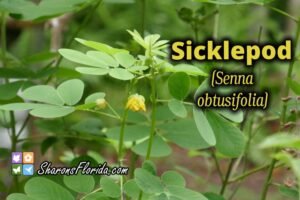
Sicklepod
(Senna obtusifolia)
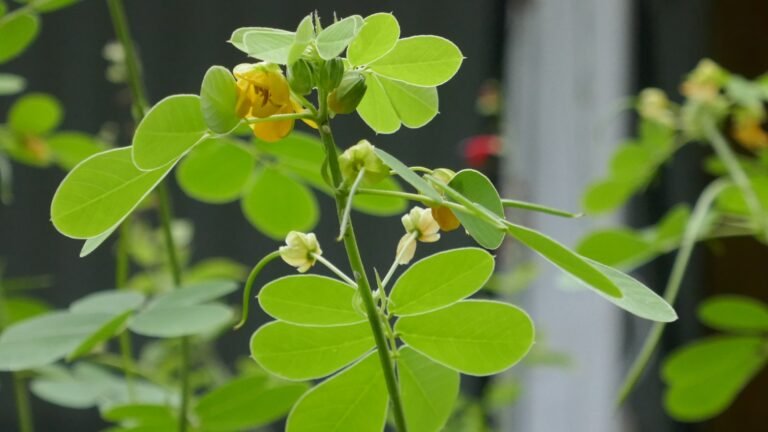
Common Names, Latin Name and Family
Its common names are java bean, coffeeweed and sicklepod.
The Latin name is Senna obtusifolia. Synonyms are Cassia obtusifolia, Cassia obtusifolia, Cassia tora, and Emelista tora.
It is found in the Fabaceae, or pea, family of plants.
Form
It is a small, annual, wildflower that grows to a height of about three feet tall by three feet wide.
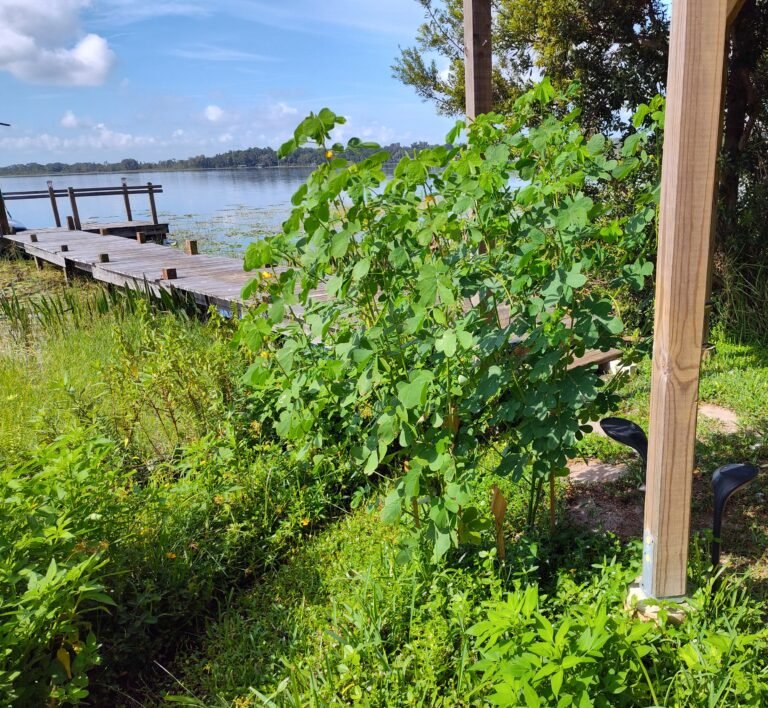
Leaves
The leaves are alternate and compound with the leaflets being in 2 or 3 pairs.
They are obovate in shape with the apex (tip) being rounded and spine-tipped.
The terminal pair of leaves is the largest.
There is a gland on the petiole (leaf stem) near the lowest set of leaves.
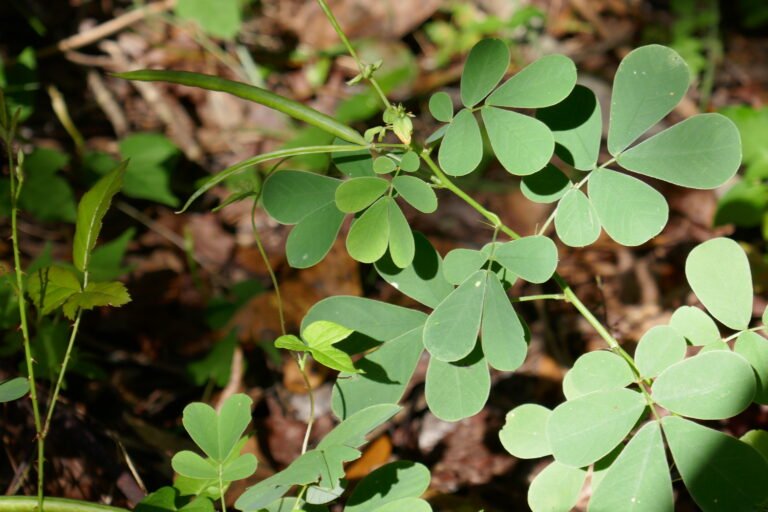
Flowers
The small yellow flowers hang down and never look like they are open. Flowers appear in the summer and fall.

Fruit
As the name implies the seed pods are sickle shaped.
They are green then turning to brown when ripe. Inside they contain a row of small beans.
The pods can reach up to eight inches in length.
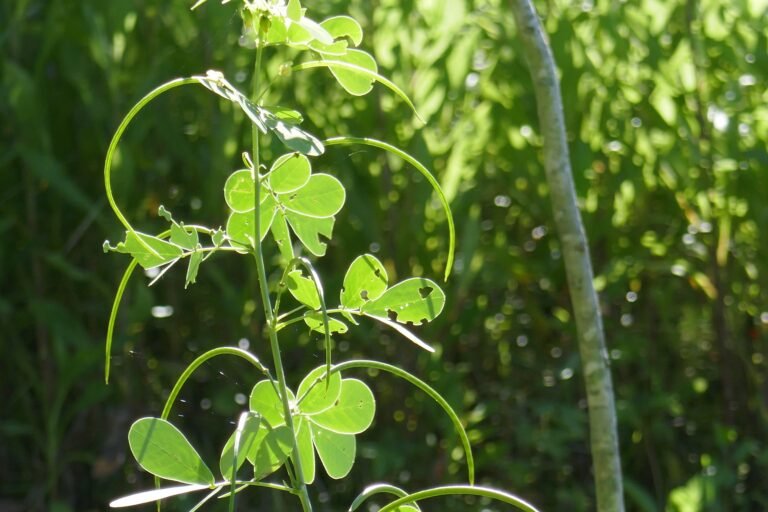
Habitat
It occurs naturally in disturbed sites.
Native Range
Some literature says it is native and some says that is questionable.
The Florida Plant Atlas still has it listed as native with the caveat that “The native range of this American species is unknown.”
It grows throughout the entire state of Florida.
It is also found in the following states: AL, AR, CA, DE, FL, GA, IL, IN, KS, KY, LA, MA, MD, MO, MS, NC, NE, NY, OK, PA, SC, TN, TX, VA, WI, and WV.
Landscape Use
Sicklepod can be grown just about anywhere in your green space. If you self-sow the seeds it will germinate and produce plants that will even grow in a sparse lawn.
It grows well along the edges of tree lines, in containers, and mixed in with other wildflowers. It can handle just about any soil type, but prefers full sun for best growth. They aren’t picky about soil type. They’ll grow in dry to moist soil from rich to sandy.
You can tuck it in just about any place in your garden since it stays pretty small, and it’s an annual so it won’t take over or get too big to deal with.
All parts of the plants are poisonous if consumed so grow it away from pets and livestock.
There are some human uses as you can see below, but I would approach it with caution and ask an expert for advice if you intend to try it for human consumption.
Wildlife Uses
Sicklepod is a larval host plant to quite a few of our butterflies so is a great addition to a Florida butterfly garden.
The butterflies that use it include cloudless sulphur, orange barred sulphur, and the sleepy orange.
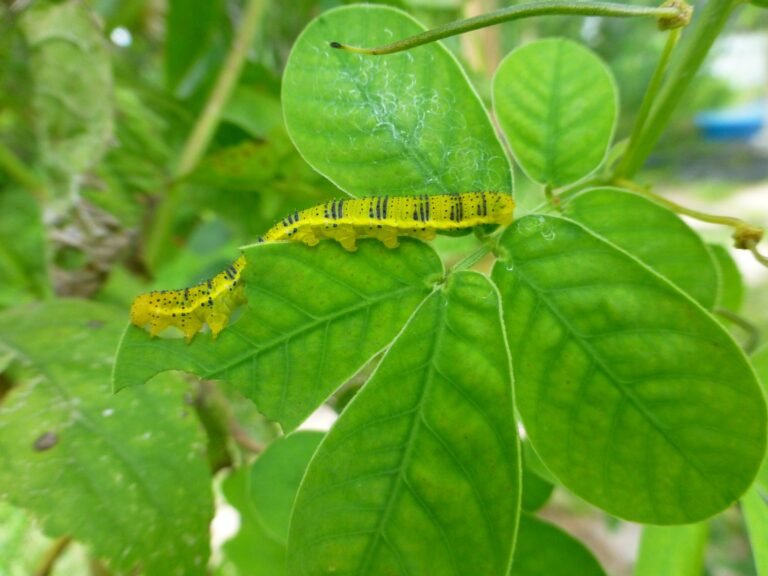
Propagation
It is an annual so it needs to be started from seed. It can be transplanted, but (as with most annuals) the survival rate is low. Direct sowing works best because it excludes the possibility of diseases and damaging the fragile roots when removing them from pots.
If you are trying to transplant volunteers be sure to get a large chunk of the soil around the base of the plant so you don’t disturb the roots.
I sell sicklepod seeds at my Ebay store – https://www.ebay.com/itm/256280486521.
Human Uses
Apparently some cultures roast the seeds, and grind them, to make a coffee like substitute. In the Sudan the leaves are fermented to make a meat replacement food product called kawal.
“The green leaves of the plant are fermented to produce a high-protein food product called kawal which is eaten by many people in Sudan as a meat substitute. Its leaves, seeds, and root are also used in folk medicine, primarily in Asia. It is believed to possess a laxative effect, as well as to be beneficial for the eyes. As a folk remedy, the seeds are often roasted, then boiled in water to produce sicklepod tea. The plant’s seeds are a commercial source of cassia gum, a food additive usually used as a thickener and named for the Chinese Senna’s former placement in the genus Cassia. Roasted and ground, the seeds have also been used as a substitute for coffee. In vitro cultures of S. obtusifolia such as hairy roots may be a source of valuable secondary metabolites with medical applications.” [1]
[1] Kowalczyk, Tomasz; Sitarek, Przemysław; Toma, Monika; Picot, Laurent; Wielanek, Marzena; Skała, Ewa; Śliwiński, Tomasz (2020-03-27). “An Extract of Transgenic Senna obtusifolia L. hairy roots with Overexpression of PgSS1 Gene in Combination with Chemotherapeutic Agent Induces Apoptosis in the Leukemia Cell Line”. Biomolecules. 10 (4): 510. doi:10.3390/biom10040510. ISSN 2218-273X. PMC 7226363. PMID 32230928.
